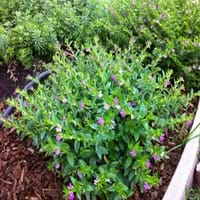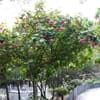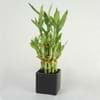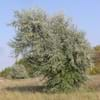Life Span
Perennial
Annual and Perennial
Type
Shrub
Bulb or Corm or Tuber
Origin
Mexico, Central America
Central America, South America
Types
Not Available
Vine, Flowering plant
Number of Varieties
Not Available
Habitat
Tropical areas
All sorts of environments, Along Railroads, Banks, Moist Ditches, Roadsides, rocky banks of streams
USDA Hardiness Zone
9-15
10-13
Sunset Zone
H1, H2, 16, 17, 18, 19, 20, 21, 22, 23, 24
21,22
Habit
Cushion/Mound-forming
Vining/Climbing
Minimum Width
Not Available
Flower Color
White, Pink, Light Pink, Lavender, Violet
Purple, Rose
Flower Color Modifier
Not Available
Bicolor
Fruit Color
Non Fruiting Plant
Not Available
Leaf Color in Spring
Light Green, Dark Green
Purple, Dark Green, Black
Leaf Color in Summer
Dark Green
Light Green
Leaf Color in Fall
Dark Green
Several shades of Green
Leaf Color in Winter
Dark Green
Light Green
Leaf Shape
Oblong to lance-shaped
Acicular
Plant Season
Spring, Summer, Fall, Winter
Spring, Summer, Fall, Winter
Sunlight
Full Sun, Partial Sun, Partial shade
Full Sun, Partial Sun
Growth Rate
Medium
Very Fast
Type of Soil
Clay, Loam, Sand
Clay, Loam, Sand
The pH of Soil
Acidic, Neutral, Alkaline
Acidic, Neutral, Alkaline
Soil Drainage
Well drained
Well drained
Bloom Time
Indeterminate
Late Spring, Early Summer, Summer, Late Summer, Early Fall, Fall, Late Fall
Tolerances
Drought
Drought
Where to Plant?
Ground, Pot
Container, Ground
How to Plant?
Cuttings, Divison, Layering, Seedlings
Cuttings, Leaf Cutting, Tuber propagation
Plant Maintenance
Medium
Medium
Watering Requirements
Needs watering once a week, Requires more often in extreme heat
Keep the Soil well drained, Needs very little water
In Summer
Lots of watering
Lots of watering
In Spring
Moderate
Moderate
In Winter
Average Water
Average Water
Soil pH
Acidic, Neutral, Alkaline
Acidic, Neutral, Alkaline
Soil Type
Clay, Loam, Sand
Clay, Loam, Sand
Soil Drainage Capacity
Well drained
Well drained
Sun Exposure
Full Sun, Partial Sun, Partial shade
Full Sun, Partial Sun
Pruning
Prune if you want to improve plant shape
Remove damaged leaves, Remove dead branches, Remove dead leaves
Fertilizers
14-14-14 Fertilizer
All-Purpose Liquid Fertilizer
Pests and Diseases
Free of serious pests and diseases
Red blotch
Plant Tolerance
Drought
Drought
Flower Petal Number
Single
Single
Foliage Texture
Medium
Coarse
Foliage Sheen
Glossy
Matte
Attracts
Butterflies
Aphids, Beetles, Cutworms, Insects, Mites, Whiteflies
Allergy
no allergic reactions
Abdominal pain, allergic reaction, Nausea, Skin rash, Twitching of face
Aesthetic Uses
Borders, Ground Cover
Not Used For Aesthetic Purpose
Beauty Benefits
Not Available
Not Available
Environmental Uses
Air purification
Air purification
Medicinal Uses
Dysentry, Eye Infection, Indigestion, Organ Stones
Cures constipation, Fiber, Low calories, lowering blood pressure, Potassium, ß-carotene, Vitamin A, Vitamin C
Part of Plant Used
Flowering Tips, Flowers, Leaves, Shoots, Stem
Leaves, Root, Shoots, Stem, Tuber
Other Uses
Showy Purposes
Starch, Used As Food, Used as Ornamental plant
Used As Indoor Plant
Yes
Sometimes
Used As Outdoor Plant
Yes
Yes
Garden Design
Bedding Plant, Container, Edging, Foundation, Groundcover, Hanging Basket, Mixed Border
Container, Edible, Groundcover, Hanging Basket, Herb / Vegetable, Mixed Border, Rock Garden / Wall, Vine
Botanical Name
CUPHEA hyssopifolia
IPOMOEA batatas 'Blackie'
Common Name
False Heather, Mexican Heather, Hawaiian Heather
Blackie Sweet Potato Vine, Sweet Potato Vine
In Hindi
Mexican Heather
शकरकन्द
In German
Mexican Heather
Süßkartoffel
In French
Mexicaine Heather
Patate douce
In Spanish
Heather mexicana
Ipomoea batatas
In Greek
Μεξικού Heather
Sweet potato
In Portuguese
Mexican Heather
Batata-doce
In Polish
Mexican Heather
Wilec ziemniaczany
In Latin
Mexicanus Heather
Ipomoea batatas
Phylum
Magnoliophyta
Tracheophyta
Class
Magnoliopsida
Magnoliopsida
Family
Lythraceae
Convolvulaceae
Clade
Angiosperms, Eudicots, Rosids
Angiosperms, Asterids, Eudicots
Tribe
Not Available
Not Available
Subfamily
Lythroideae
Not Available
Number of Species
Not Available
Not Available
Importance of Mexican Heather and Sweet Potato Vine
Want to have the most appropriate plant for your garden? You might want to know the importance of Mexican Heather and Sweet Potato Vine. Basically, these two plants vary in many aspects. Compare Mexican Heather and Sweet Potato Vine as they differ in many characteristics such as their life, care, benefits, facts, etc. Every gardener must at least have the slightest clue about the plants he wants to plant in his garden. Compare their benefits, which differ in many ways like facts and uses. The medicinal use of Mexican Heather is Dysentry, Eye Infection, Indigestion and Organ Stones whereas of Sweet Potato Vine is Cures constipation, Fiber, Low calories, lowering blood pressure, Potassium, ß-carotene, Vitamin A and Vitamin C. Mexican Heather has beauty benefits as follows: Not Available while Sweet Potato Vine has beauty benefits as follows: Not Available.
Compare Facts of Mexican Heather vs Sweet Potato Vine
How to choose the best garden plant for your garden depending upon its facts? Here garden plant comparison will help you to solve this query. Compare the facts of Mexican Heather vs Sweet Potato Vine and know which one to choose. As garden plants have benefits and other uses, allergy is also a major drawback of plants for some people. Allergic reactions of Mexican Heather are no allergic reactions whereas of Sweet Potato Vine have Abdominal pain, allergic reaction, Nausea, Skin rash and Twitching of face respectively. Having a fruit bearing plant in your garden can be a plus point of your garden. Mexican Heather has no showy fruits and Sweet Potato Vine has no showy fruits. Also Mexican Heather is not flowering and Sweet Potato Vine is not flowering . You can compare Mexican Heather and Sweet Potato Vine facts and facts of other plants too.





